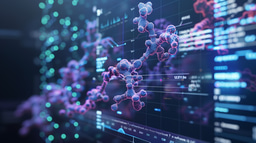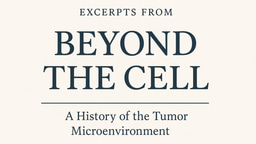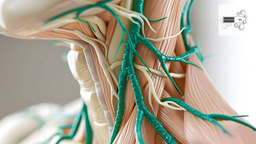⏳ The Tumor’s Clock
Published in Cancer

In the 1980s, a small group of oncologists began asking an odd question: When is the best time to treat cancer?
It wasn’t a question of diagnosis or staging, but of hours and minutes. Francis Lévi in Paris, William Hrushesky in the United States—they were convinced that the body’s molecular clocks could be turned into weapons. If chemotherapy was given when cancer cells were most vulnerable, and healthy cells most shielded, perhaps the same drug could cure more and harm less.
Their idea came from a deeper truth: every cell keeps time. The tick and tock of circadian genes—BMAL1, CLOCK, PER, CRY—governs when DNA is repaired, when blood vessels open, when immune cells patrol. In healthy tissue, this rhythm is precise, almost musical.
But in cancer, the orchestra falters. Tumors can warp their own clocks—and the clocks of the microenvironment around them. Vessels leak at the wrong hours. Immune sentinels arrive late. Fibroblasts and cancer cells change their metabolic tempo. Even the flow of oxygen through the tumor’s vasculature has a daily rhythm, sometimes flipped or fractured beyond recognition.
Chronobiology reframes cancer as not only a disease of space—cells invading where they don’t belong—but also a disease of time. The tumor microenvironment is not static; it breathes and shifts with the day’s passing.
In Beyond the Cell, I trace this story from the first chronotherapy trials to today’s efforts to map a tumor’s “daily schedule” using biomarkers, wearable devices, and spatial biology. The premise is as bold now as it was forty years ago: if we can understand cancer’s time, we might learn how to stop its future.
References for Further Reading
-
Lévi F, et al. Circadian timing in cancer treatments. Annu Rev Pharmacol Toxicol. 2010;50:377–421.
→ Foundational review on the science and clinical application of chronotherapy in oncology. -
Hrushesky WJM. Circadian timing of cancer chemotherapy. Science. 1985;228(4695):73–75.
→ One of the earliest articulations of timing chemotherapy to the body’s biological rhythms. -
Fu L, Lee CC. The circadian clock: Pacemaker and tumour suppressor. Nat Rev Cancer. 2003;3(5):350–361.
→ Explores how circadian gene disruption contributes to tumor development. -
Sancar A, et al. Circadian clock, cancer, and chemotherapy. Biochemistry. 2015;54(2):110–123.
→ Molecular mechanisms connecting clock genes to DNA repair and cancer therapy response. -
Innominato PF, et al. The circadian timing system in clinical oncology. Ann Med. 2014;46(4):191–207.
→ Clinical insights into how circadian biology affects drug metabolism and toxicity. -
Masri S, Sassone-Corsi P. The emerging link between cancer, metabolism, and circadian rhythms. Nat Med. 2018;24(12):1795–1803.
→ Integrates circadian biology, metabolic shifts, and tumor microenvironment dynamics.
#cancerresearch #chronobiology #tumormicroenvironment #oncology #beyondthecell
Follow the Topic
Ask the Editor – Inflammation, Metastasis, Cancer Microenvironment and Tumour Immunology
Got a question for the editor about inflammation, metastasis, or tumour immunology? Ask it here!
Continue reading announcement




Please sign in or register for FREE
If you are a registered user on Research Communities by Springer Nature, please sign in